Daniel Armyn opened his eyes and saw a train wheel spinning above him.
Smoke from an electrical fire stung his nostrils. Nearby someone cried.
"Every minute of the day I can see this," he says a year later. "I can paint this photograph."
Blair Berman awoke in woods lit by a half-moon. Strangers lay on her legs, screaming for help. She tried to pull herself upright by a tree and collapsed.
A year later, her New York City life has been replaced with physical therapy back home in Gwynedd Valley and slow recovery.
Days passed before Geralyn Ritter regained consciousness. Her first memory is hearing a voice, then seeing her husband, brother, and mother. She was in the hospital, with a tube in her throat that kept her from speaking. She tried to mouth, "But I'm going to be OK, right?"
A year later, she still doesn't know the answer.
The evening of May 12, 2015, Armyn, Berman, and Ritter boarded Amtrak Train 188 to New York City. Eleven minutes after departing 30th Street Station, there was shaking, a sickening tilt, then darkness. They were all in the first car, the business car, when the train derailed rounding the Frankford Curve.
Overhead photos of the crash site showed six passenger cars still recognizable as parts of a train. But from above, it looked as if massive hands had gripped Car 1 by both ends and twisted, then bent it in half.
Eight people died in the disaster, and rescuers found half of them in or near Car 1, according to the National Transportation Safety Board. At least seven of the most seriously injured passengers rode in Car 1, more than in any other part of the train. It is astonishing anyone survived.
A year after opening their eyes to a changed world, the passengers on that car are still asking if there is a return to life before the derailment of Amtrak Train 188.
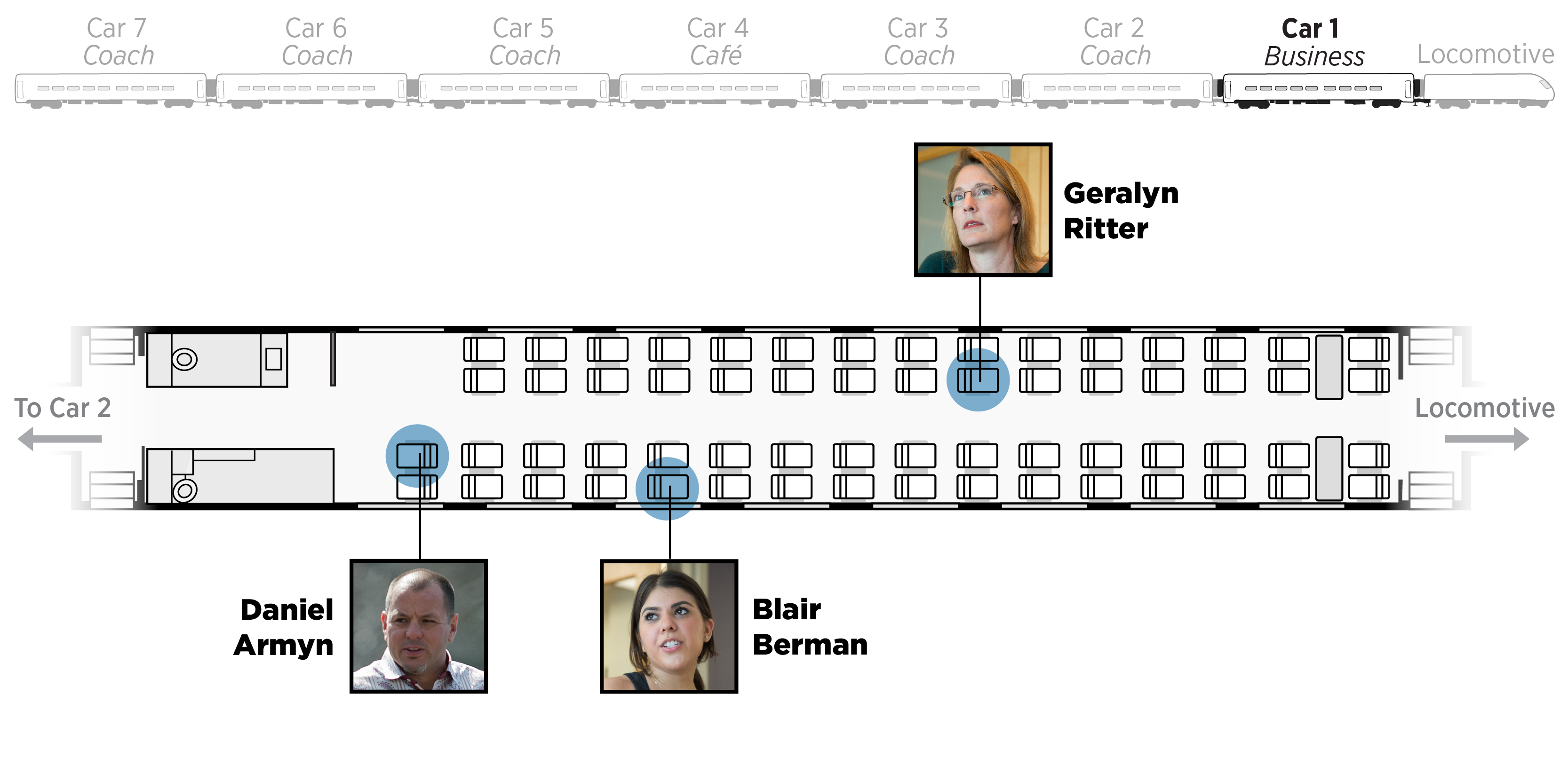
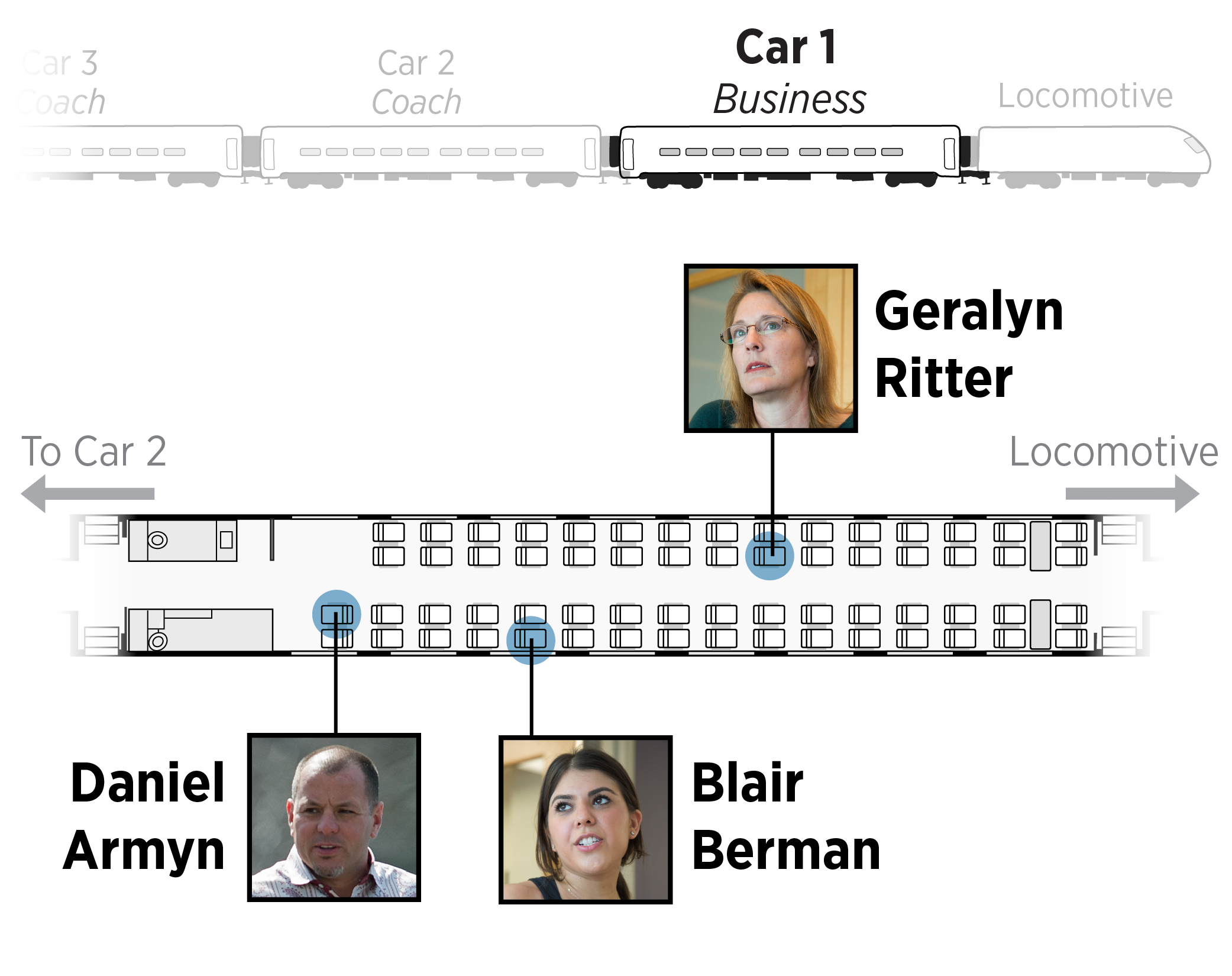
Two and a half years ago, Daniel Armyn, 43, left a lucrative job at the Midtown Manhattan advertising firm he helped found to open a smaller business, NewBreed Advertising, in his hometown of Babylon, Long Island. He landed a few clients in the spirits industry and made more time for his wife, Nicole, and their two children.
That Tuesday, it looked as if his big risk was paying off. A meeting in Washington with Total Wine & More executives went great, and promised a multiyear project to create brands of spirits.
"It was probably the best day I had since the beginning of the business," he said. "I was just loving life, really."
He celebrated with oysters and Scotch at Union Station. A friend called and mentioned an Acela train leaving the capital just a bit later that would get him to Penn Station earlier, but he shrugged it off. When Train 188 arrived, he took an aisle seat on the right of the business car and opened his laptop.
Blair Berman didn't exactly belong on Car 1. The 24-year-old had bought a coach ticket but moved to the business car when she saw open seats.
She was ending a long weekend in Gwynedd Valley celebrating Mother's Day with her parents and two brothers, but going back to the city was a return to her dreams.
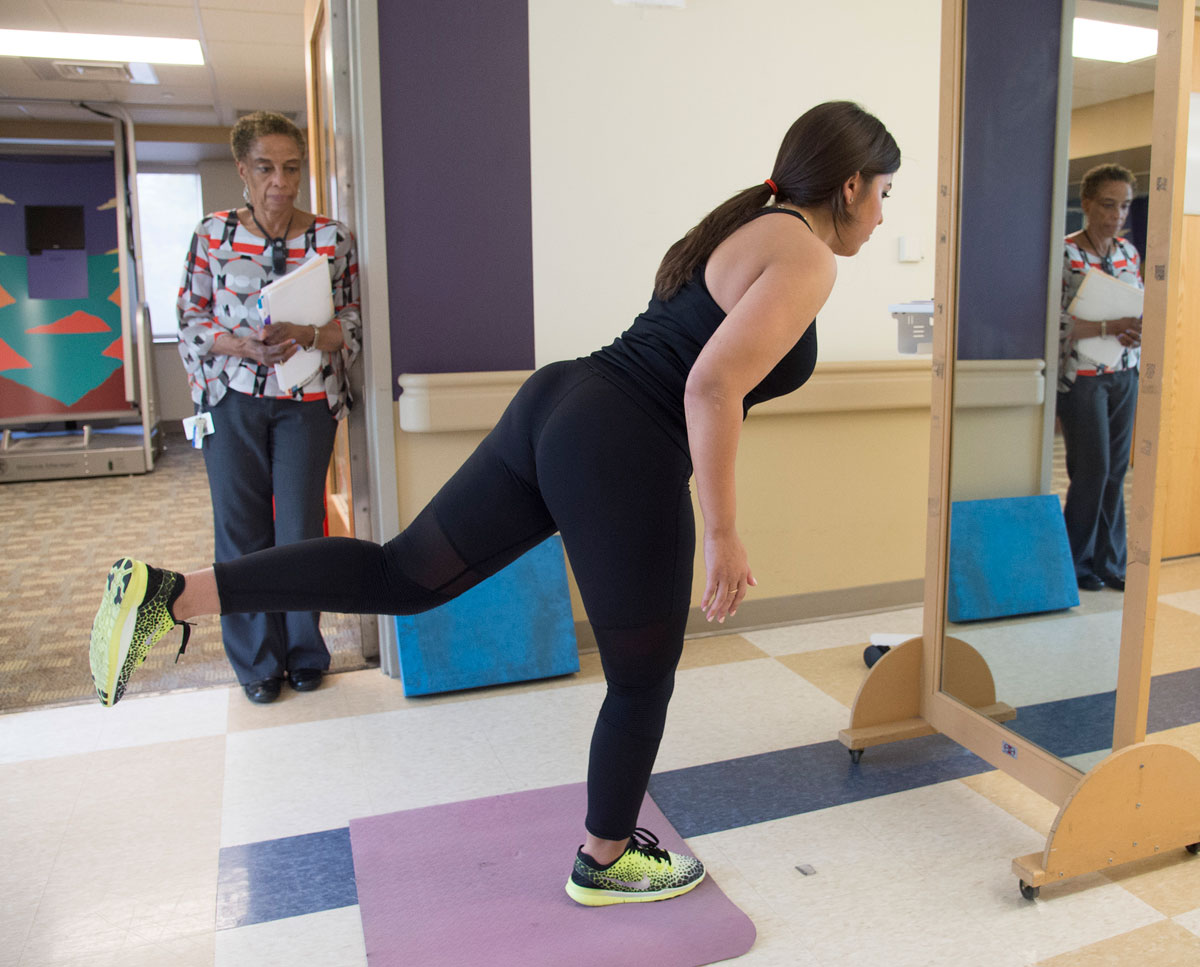
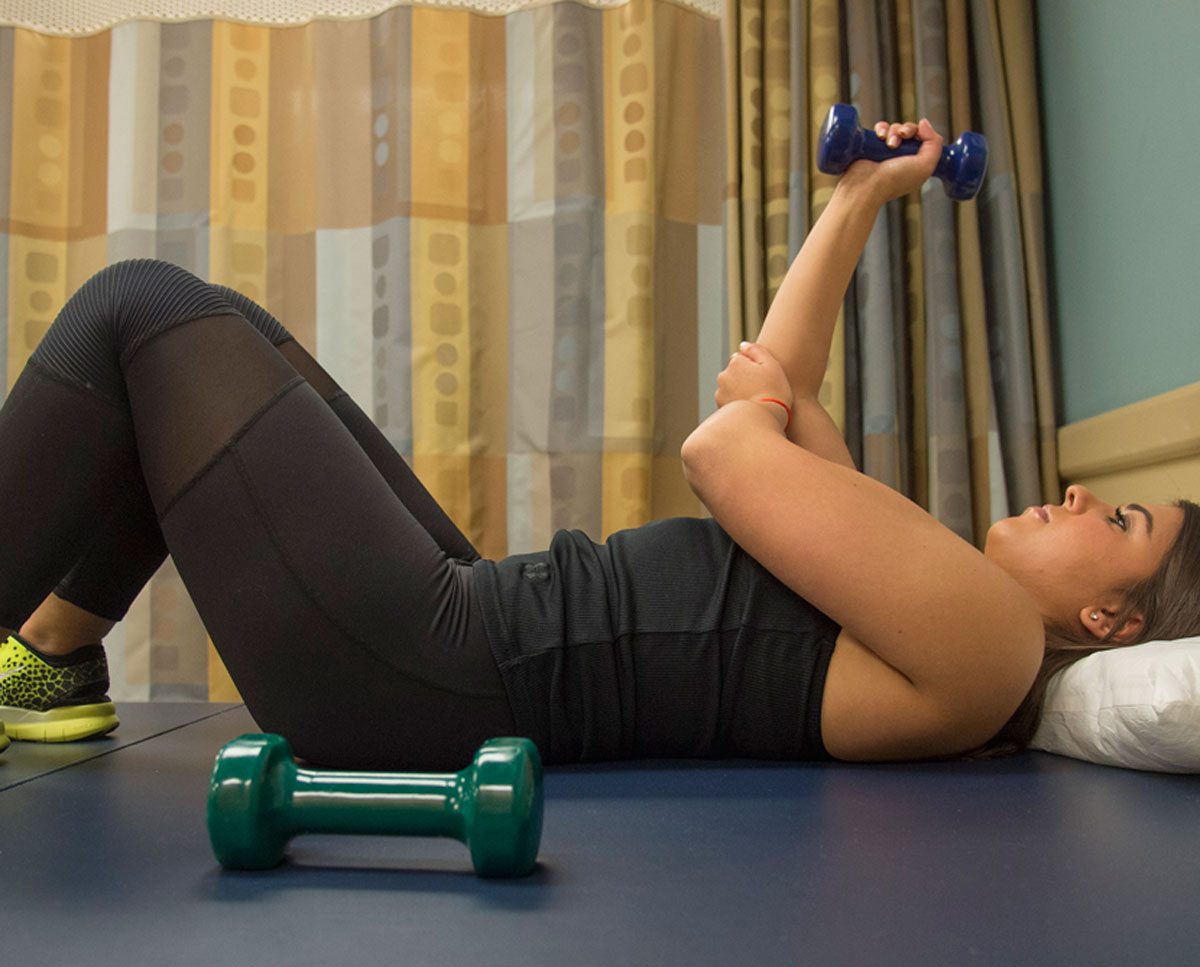

While working a retail job at Denim Habit, she had been building a clothing line, Blair Jennifer, with tees and sweaters she decorated with stylized faces or sayings like "Fabulous, Fierce, Flawless."
"I saw a bunch of shirts online and I thought, I could do this," she said.
She built an online presence, visited stores with samples, and personally managed shipping. Boutiques in Philadelphia were starting to carry her clothes.
As the train departed Philadelphia, she dropped her pocketbook in the seat next to hers by the window on the right side of the train, and texted a friend: I'm on my way.

Geralyn Ritter also had business that day in Washington, and could have traveled from there directly to New York City. She wanted to stop first in Philadelphia, though, to speak to a group of women who had also gone to Duke University.
A senior vice president at Merck and a graduate of Stanford Law School and Johns Hopkins University's international studies graduate program, Ritter, 47, had plenty to share.
She handled corporate governance for the pharmaceutical giant and had a stint managing charitable programs. Among her projects: working to reduce mortality for pregnant women in Uganda, India, and Ethiopia.
"I loved my job," she said. "I traveled all over."
Ritter talked to the alums about being a woman in a leadership position, public policy, health care, and trade, then walked back to 30th Street Station. She found an aisle seat on the left side of Car 1, stored her briefcase on an overhead rack, and texted her husband, Jon, "leaving Philly."
About 10 minutes after leaving 30th Street Station, Ritter reached for her briefcase.
"I stood up to get what I wanted to read," she recalled, "and I had to hold on."
As the train leaned farther to the right, she felt herself falling. She screamed.
Berman felt the tilting, too. She was a regular on the trip to New York, and could tell they were traveling too fast.
"That's when I heard a really loud, like, bang," she said, clapping her hands to demonstrate, "and I blacked out."

Armyn's laptop and paperwork skidded to the right. He reached to catch it.
"I realized what the noise was, what the shaking was. . . . The train is going off the rail," he said. "In that instant it got incredibly violent, and I literally threw myself this way, to the left, and cuddled up."
He remembered screaming, "What the hell is going on?"
The 216,000-pound locomotive hit the turn at 106 mph - more than twice the speed limit - and tilted to the right, and Car 1 flipped.
"It was like being in an aluminum can if someone is crushing it," Armyn said.

When the car finally came to rest in a grassy area about two football fields from the point of derailment, the front faced south and the rear northeast like a giant, twisted letter L.
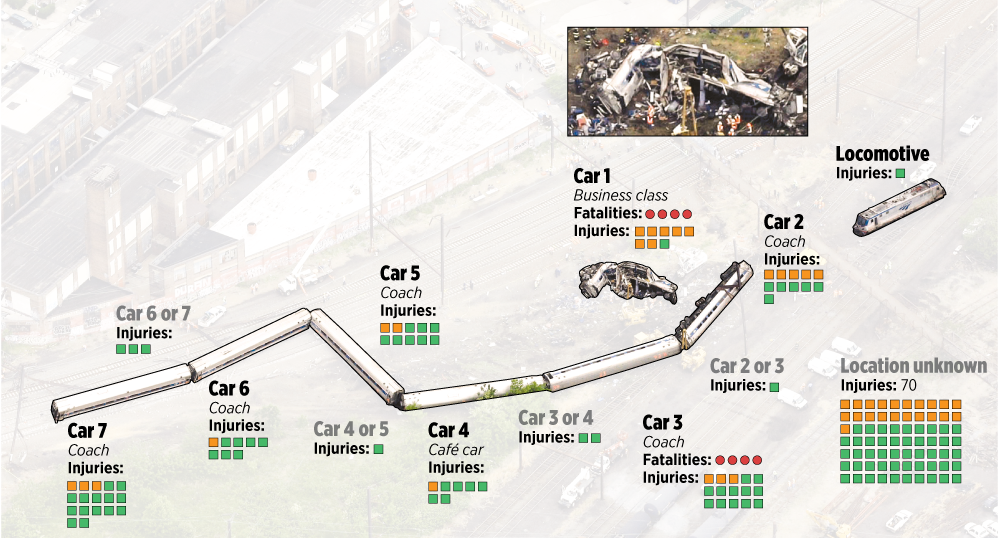
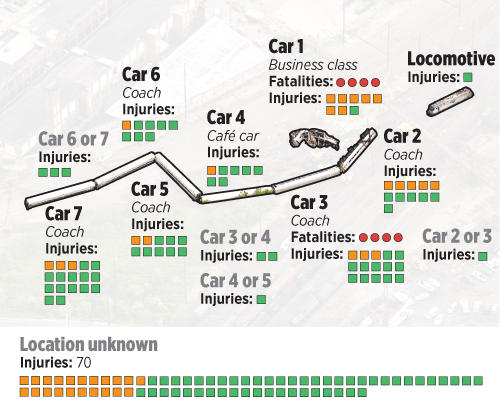
"The car's on fire!" someone shouted from a distance.
Screams for help rode the night's warm breeze.
People walked atop an overturned railcar.
"We're OK," they called out. "We're OK."
Armyn was outside, near a crying man who was covered in shards of metal and wood. When he stepped toward the man, Armyn's left leg gave out. Something was wrong with his knee. Fearing he had worse injuries, he lay down on seat cushions strewed about him, raised his hand for help, and waited.
Armyn suffered three broken right ribs, tears to his left knee's ligaments, broken top front teeth, and cuts and scrapes.
Berman lost her flip-flops somewhere between her train seat and the woods. She stood on bare feet, propped against a tree, screaming. Someone approached from a nearby field, a man with blood on his face.
It was the train's engineer, Brandon Bostian, and when Berman asked to use his phone, she said, he replied, "No."

"I think I was a little aggressive," she said. "I kept saying: 'Can I use your phone? Can I use your phone?' "
Bostian relented. She talked to her father, Fred, and soon four police officers arrived to carry her to the street with hundreds of other injured people. She asked if she was going to die.
"You're OK, sweetie," a cop said. "You're going to be fine."
Berman's right arm and her right heel bone were broken. When her father finally found her in the hospital, her face was covered in a mask of blood.
Ritter doesn't remember where the crash threw her or who found her, but her husband has vivid memories: the shock of realizing his wife was riding the derailed train shown on the news; a rushed drive to Philadelphia from Whitehouse Station, N.J.; his teenage sons, Austin and Bradley, texting him, begging him to find their mother.
He visited two staging areas and at least four hospitals as Tuesday night became Wednesday morning. At one stop, an elementary school turned into an emergency center, he lost his composure.
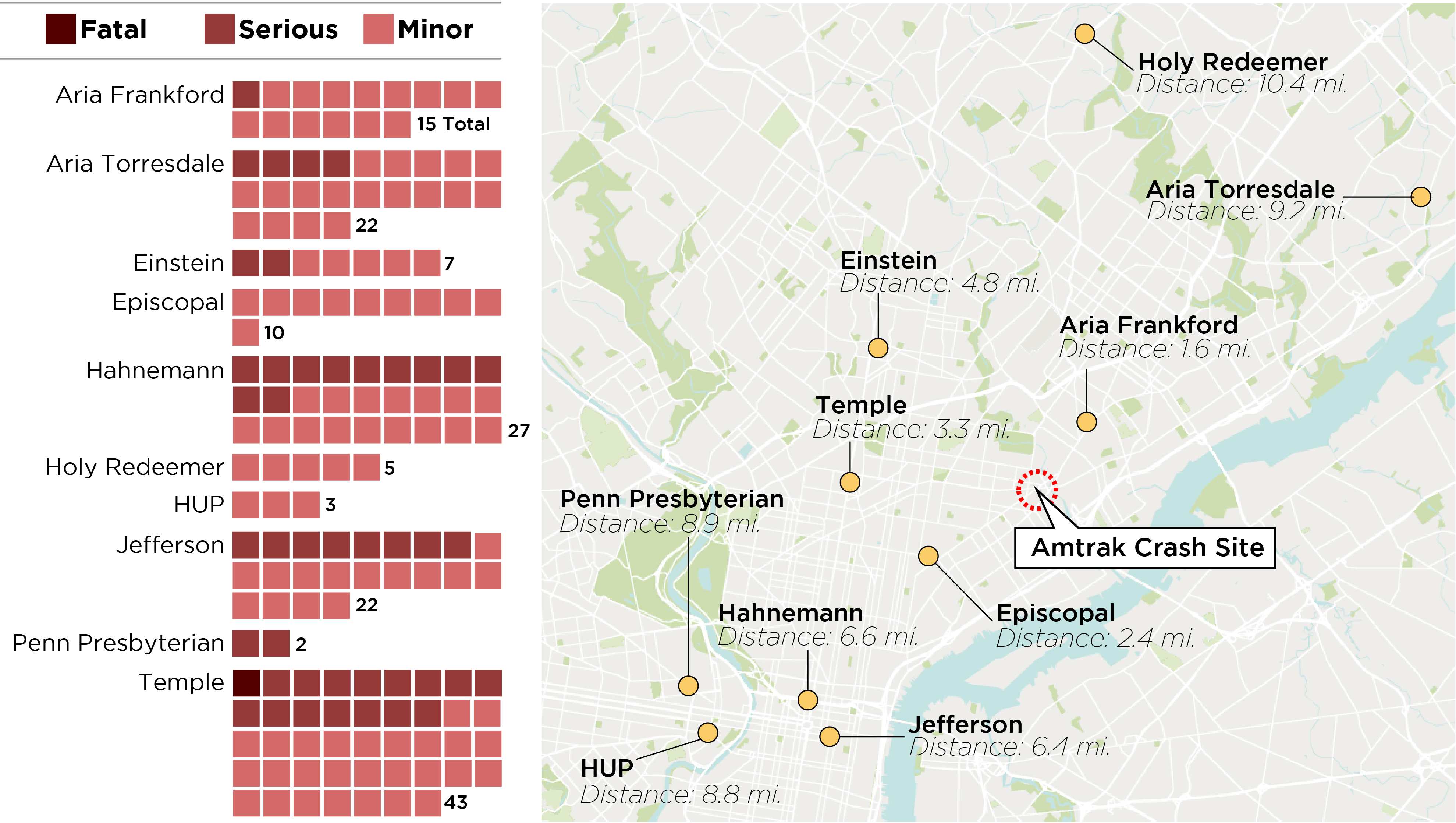
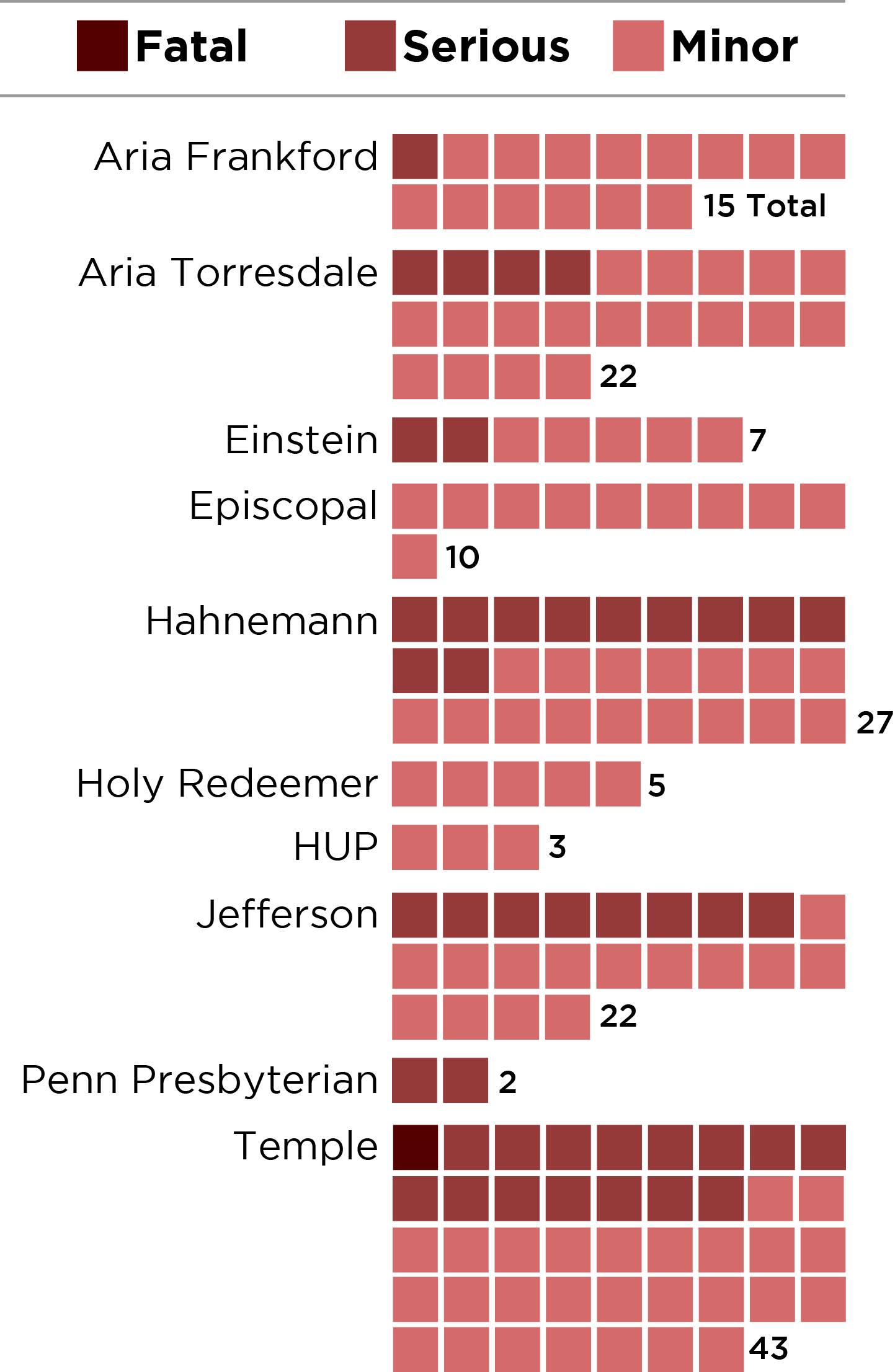

" 'I can't take this,' " he recalled saying. "I sat and I cried for about five minutes."
Ritter carried no identification when she was rescued. Her husband didn't find her at Penn Presbyterian Medical Center until close to 6 a.m.
"She's covered from neck to toe and is intubated," he said. "She doesn't look like my wife."
He wasn't sure it was her until he was shown a gold watch and a simple, braided gold bracelet he had given her.
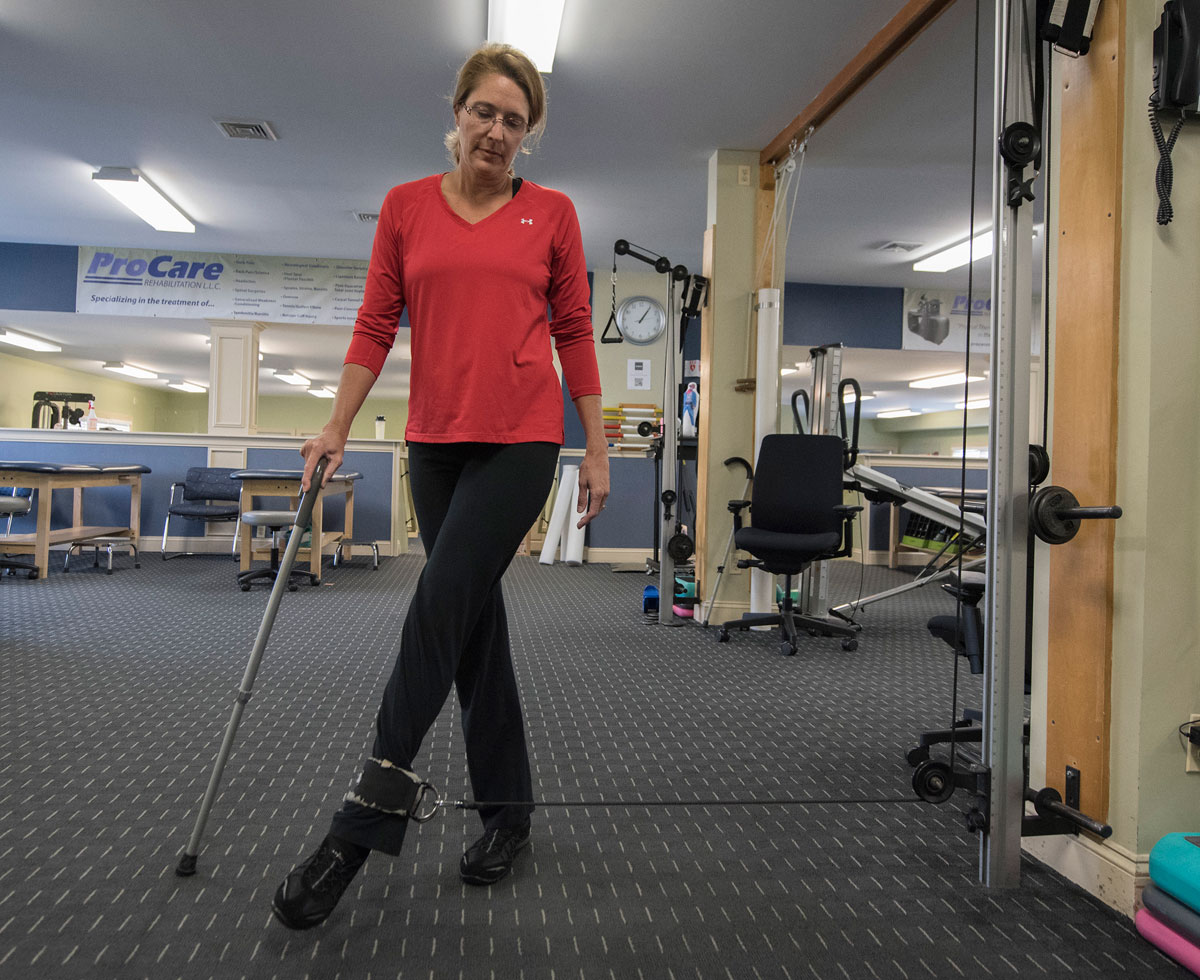
Ritter's injuries were by far the most severe of the three. Her abdominal organs were shoved up into her chest cavity. Her bladder, spleen, intestine, and a lung were damaged. Her pelvis was broken, her rib cage shattered.
Ritter, Armyn, and Berman all endured surgeries, long weeks of being washed and tended like infants by spouses or parents, then painful rehab sessions to stretch and pry their bodies back to working order. All three are among about 119 passengers suing Amtrak for the damage inflicted by the crash.
Ritter recalled passing her days watching from a hospital window as the hot-air balloon at the Philadelphia Zoo rose and fell.
"You never felt so powerless in your life," she said.
In August, Armyn moved from his bed to his desk to work again, if only for an hour at a time.
"I'd sit until I couldn't take it anymore and then I'd lie down," he said.
If he wasn't working, he wasn't making money. The deal reached in Washington the day of the crash fell through. His injuries made it impossible to meet deadlines. Other clients offered extensions on projects, but he knew it was a matter of time before they moved on, too.
"I've got to get there," he remembered thinking. "I've got to prove I'm OK."
Brawny and blustery, Armyn can make light of his injuries, even joking about being thrown from a train as a trump card against any criticism. But he becomes somber just as easily. Even as his body healed, his emotional state was, he said, "full of cracks."
"It's taken such a toll," his wife, Nicole, said. "That surpasses him getting through all the physical stuff."
Any travel Armyn can't control - train, plane, even riding in a car - is nightmarish. He experiences flashbacks, sweats, and anxiety.
In early fall 2015, the future of his business depended on flying to a meeting in Kansas. He was still on crutches then, and as the date of the flight approached, Armyn's tension built. He became convinced he would die on the plane. He had a panic attack. As he was taken aboard by wheelchair, his focus came down to simply getting on the plane.
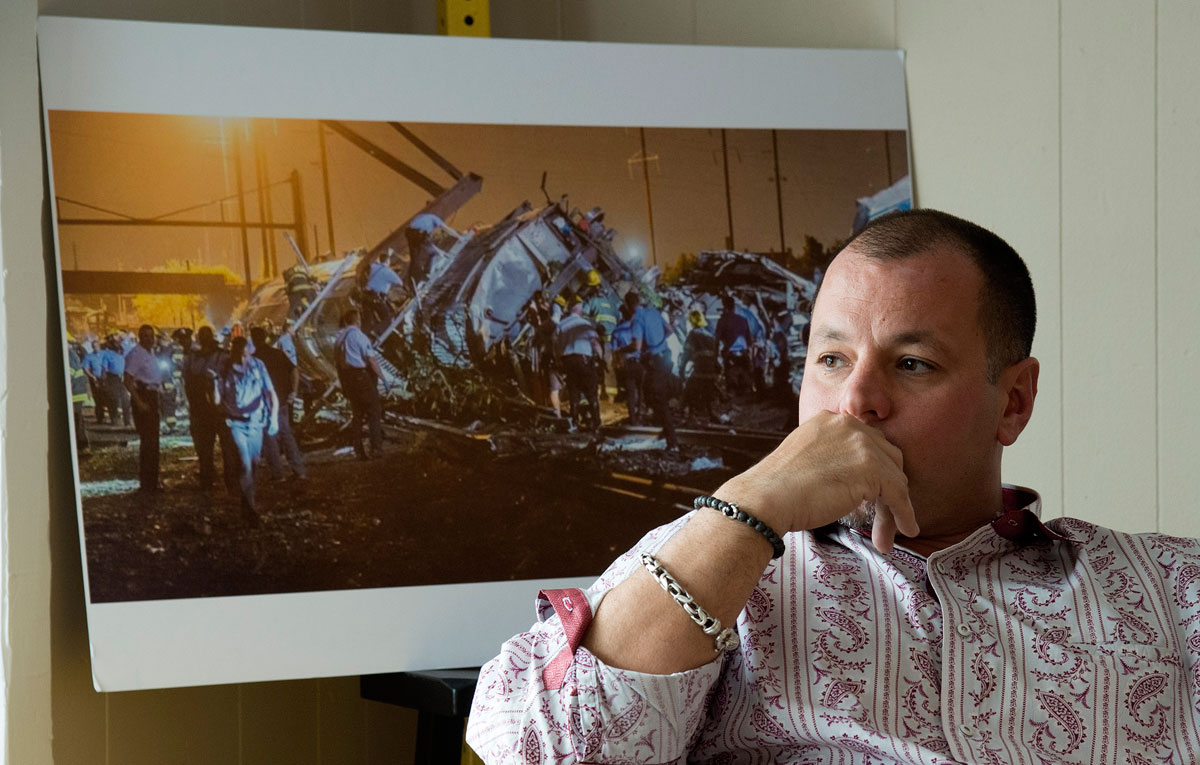
"It's a step at a time," he said. "Get on the plane, get off the plane."
After the flight, he secured a deal for NewBreed Advertising to design and market an American wheat vodka called Till.
That trip got him back into his groove, he said, but his post-traumatic stress disorder remains.
"It's that worry, like if he texts me and I don't text him back in five minutes, he thinks something's happened to me," Nicole Armyn said. "Like he truly believes something happened to me."
He can't bring himself to read much about the Amtrak crash. He has a hard time watching medical dramas or violent television. If he takes trains into the city for work, sometimes he would rather pay $120 for an Uber ride home than return on the Long Island Rail Road.
"There's calming exercises, things I'm trying to be open-minded about," he said. "I don't think it's going to work as well as a martini, but we'll see."
Amid his psyche's slow recovery, Armyn found something else: faith.
"This, it put me right back in church," he said. "If I start talking about the logistics of how I got thrown from this train and did not die, it just sounds so foolish to me."
At a MossRehab clinic in Elkins Park one recent day, Berman's brows furrowed in concentration as she folded her right foot onto her left knee to balance her 5-foot frame on her left foot. No problem. Then she did the same on her right foot. She wobbled, trying to keep her balance.

"There you go," said Kelsey Platner, one of her physical therapists. "That's gotten a lot better."
A sheen of sweat coated Berman's face as she practiced stepping onto a foam platform, jumping jacks, and hopping between rungs of a rope ladder. On the back of her right arm, from her elbow toward her shoulder, a nearly foot-long surgical scar was still purple.
Three days a week, two hours a session, she's relearning to walk, to use her right arm, to balance and strengthen the muscles in her right foot.
In March, she wore high heels for the first time since the accident. She's driving, but her right foot can't push the pedals with as much force as it used to. Her physical therapy sessions ended April 29 - but only because she has another foot surgery scheduled that will put her back in an orthopedic boot for three months.
"I've been angry, upset, confused," she said. "I just didn't understand why it happened to me."
Like Armyn, she still feels traumatized.
"I'm just more aware of everything," she said, "and I'm just more anxious."
It's unsettling, she said, when she's in a car that takes an abrupt left turn that shifts her weight to the right.
What bothers her most, she said, is that her New York City life was suddenly put on hold. She misses building her clothing line, dinner with friends at restaurants like Lavo, where she savored fried Oreos. Her friends in New York and Philadelphia are independent and nurturing careers. She is living with her parents. Every morning she limps from the damage to her heel.
She likely won't go back to New York to live, she said. She wants to eventually get an apartment in Philadelphia, though, and restart her Blair Jennifer clothing line.
She's found her long recovery solitary at times, and though she has not contacted other passengers from Train 188, she takes solace that they shared in her experience. She regularly searches online for articles about the crash.
"I want to know what people went through," she said. "If they're OK or not, what happened to them, and what they think."
Ritter is exhausted much of the time. Her rib cage, held together with plates and screws, always hurts, as if it's being squeezed. Doctors say that may never go away.
"I feel this accident," she said, "every time I breathe."
Fatigue overwhelms her. In the mornings, her husband wakes her and brings her coffee if she stays in bed too late. Last month she fell asleep with a full cup of coffee in hand. It spilled on her and the bed.
"It's been incredibly awful and it just keeps going," she said. "I am so far from what I used to do, and it makes me sad."
Hands folded, her voice soft and measured, Ritter spoke about finding ways to provide drugs to keep women in labor from bleeding to death in poor countries with hot climates, and mentioned attending diplomatic functions in Europe and Washington.
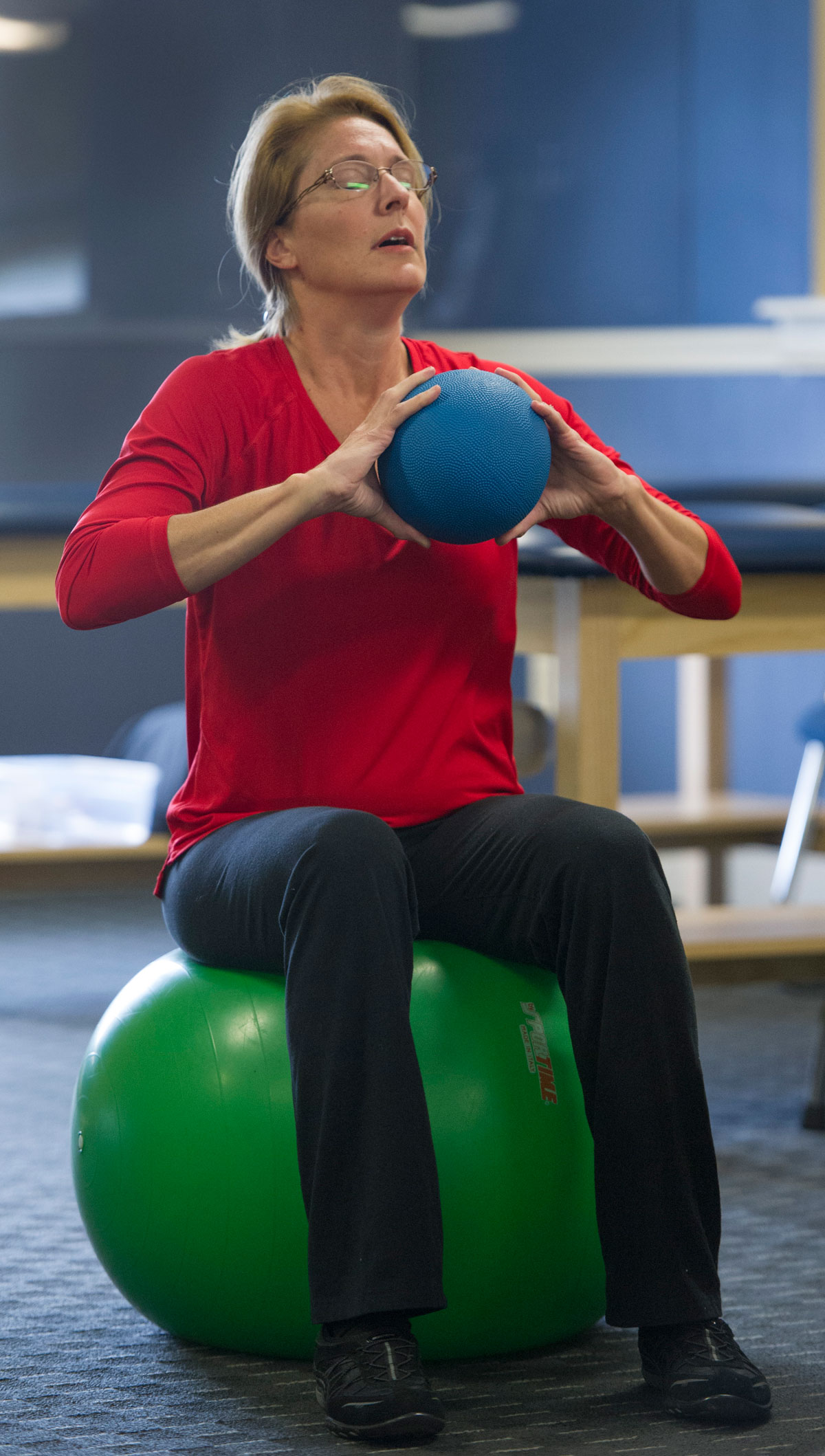
"In her life, any time she comes up against a challenge, she just pushes against it and overcomes it," said her husband, Jon, who was attracted by her brilliance and self-reliance when they met in law school.
Her success now is measured by inches. How far can she stretch her left leg? How long can she balance on a soft plastic pad? The three days a week at rehab wear her out.
Ritter has made extraordinary progress. Almost a month after the crash, she attended her son's confirmation. In a wheelchair and neck brace, she heard him tell the congregation at Flemington Presbyterian Church in New Jersey how her experience taught him about faith.
When she first arrived at rehab in July, she could barely stand. What she can expect from recovery is uncertain, because so few people survive injuries like hers.
"There's no way you can go to the Rolodex and say, 'Yeah, I've seen that a thousand times,' " said Brian Lehrer, her physical therapist.
He thinks she's done great. She mentions frustration with her progress, and Lehrer says, "We've had this conversation before."
Merck has kept her on staff, but she has not returned to work. Before the crash, her 9-year-old son, Steven, loved when she ran circles with him on the trampoline in the backyard. She can't do that anymore. Warmer weather prompted her husband to set up a volleyball net in the yard. She won't be able to play.
In June, she is scheduled for another major surgery that will at least temporarily reverse her progress. She'll be largely immobile for months.
"I'm on the sidelines," she said. "I can watch, but I can't join in."
For the first time in her life, Ritter has doubts about whether she can push through.
"It has been a tremendous challenge," her husband said. "She brings all the same tools she had, except she doesn't have all the same tools she had. That part's still scary for us."
Ritter's been reading Surviving Survival, a Laurence Gonzales book about recovering from catastrophic injuries.
"There's no going back," she said. "You're not going to be what you were before."
jlaughlin@phillynews.com, 215-854-4587, @jasmlaughlin
More coverage
-
The wreck of Train 188
May 17, 2015 - 3:01 AM -
A guy in a hat: A brave man in the ruins of Amtrak train 188
February 1 - 7:09 PM -
Amtrak crew describe the upside-down horror of Train 188
February 3 - 1:08 AM -
Congress OKs transite bill that could boost payouts to Amtrak crash victims
December 4, 2015 - 1:08 AM